Table of Contents
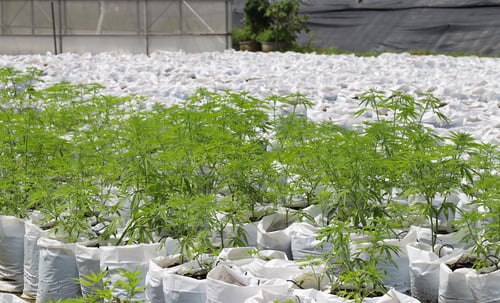
Although most people have enough space to grow cannabis, many growers are limited to small indoor spaces. However, that doesn’t mean you can’t grow excellent cannabis; it’s quite the opposite. You can maximize your growing space and create incredible cannabis from small areas with the correct techniques.
In this article, we will give you 11 key tips to make your cannabis growing space more efficient.
Choosing the right strain is paramount to maximizing your growing space (especially in a small growing space). Typically, ruderalis strains or indica strains offer more advantages over sativas because of their lack of stretch during the flowering period, compact size and short internodes.
With that said, that doesn’t mean you can’t use sativa strains in small growing spaces. If you have the right vegetative period and training, you can achieve incredible results with sativa, even if you’re a hobbyist.
Each strain comes with specific properties and behaviors; these can offer clues to the grower to bring the best out of the plants. For example, if a certain cannabis strain continues to branch after the switch to flowering, you may require more space per plant.
Most importantly, finding the best balance between the size and density of your preferred strains allows your plants to achieve healthy, strong and dense buds. If you get the balance wrong, you’ll likely end up with underdeveloped buds which fall short of their maximum yield.
You must ensure you get the maximum possible light on your floor space, regardless of how small. More importantly, you need to distribute the light evenly around the growth space. Therefore, you need the right lighting system built around your growth space.
You’ll need to ensure the room’s temperature stays between 70 to 85 degrees Fahrenheit when the lights are on and 58 to 70 degrees Fahrenheit when the lights are off. However, the room’s temperature should depend on the cannabis strain.
For example, sativas are more tolerant of high temperatures, whereas indicas prefer colder temperatures. There are three primary tools to measure and regulate temperature:
You can also control the temperature through lighting, airflow, ACs and heaters. In addition, you can control the humidity through dehumidifiers, airflow, water, and humidifiers.
If you have limited floor space, you should grow upwards. Indoor tent technology is improving all the time. As a result, there are increasing options for tents that divide vertically. However, if the high price tag puts you off, you could create your own vertical compartments.
But if you choose the DIY option, ensure the floors of your compartments and the side supports can withstand the weight of mature cannabis plants.
Compact lighting is key to achieving excellent cannabis growth. Many small growing spaces—especially indoor ones—struggle to use high-wattage lighting. That’s often because of heat issues and the size of the lights.
However, if you have small tents—such as less than a meter squared—you should use LED lighting systems or CFL because they’re often small and compact. In addition, they also include built-in reflectors, which offer unidirectional light without requiring reflectors.
There’s no point buying expensive equipment if you’re not going to optimize it. If you have a small grow space, the equipment you choose and how you use it will hugely impact your cannabis growth.
If you’re using HPS lighting, you could use a cool-running ballast, such as the ReVolt. It claims to run 15% cooler than other ballasts, which ensures the room temperature doesn’t spiral out of control and ruin your cannabis.
Another superb option is the fans that you can place on the sides of your tent; this will ensure you save floor space.
The SCROG technique is essential for smaller growing spaces because it promotes the neat growth of flowers and enables light to penetrate equally across the flower sites. The SCROG process is straightforward. You place a screen between the plants and the light source. As the plants grow toward the light, the branches will grow through the screen, and you can tie them with a string or twine. As a result, you can maximize light penetration by training the branches to fill out.
Hydroponics can preserve enormous amounts of space compared with classic container grows if you have the ideal setup. For example, when you use containers, you’ll need substantial space for the roots to grow freely and access the required number of nutrients.
However, when you use hydroponics, the roots can occupy a much smaller space because nutrient-rich water is continually renewed, which helps the roots to grow in a smaller area.
Stretching is a complete nightmare for any grower because it often results in loose and light buds—which can reduce yield and waste money. However, stretching is even worse for small-scale growers; it can result in your plants growing beyond their light source. If you’re using hot lights, you can badly burn your plants.
The best way to minimize stretching is to ensure your light source is at the perfect distance from the plants. For example, the further away your plants are from the lights, the better it is when growing in a small space. However, if all else fails, use topping and training techniques to prevent stretching.
First-time growers need quality potting soil to provide their plants with enough nutrients. The cannabis industry regularly calls this soil “super soil” because it can grow a cannabis plant from start to finish without any issues. You can make this soil yourself by using worm castings, bat guano and other components mixed with good soil.
However, you’ll likely feel overwhelmed when you look for soil in a store. You may find words like biochar, compost, plant food, bone meal, etc. Many companies will offer a superb structure with basic nutrients; they allow you to fill in the nutritional gaps.
Having a small space to grow cannabis doesn’t mean you can’t grow superb marijuana. If you follow the tips above, you’ll maximize your growing space, regardless of how small it is.
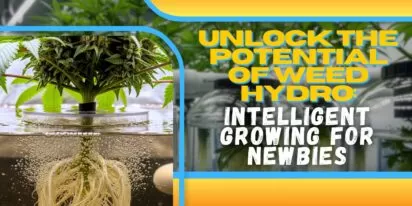
Curious about growing weed in a healthy, effective way? Welcome to the realm of weed hydro! This method uses water instead of soil, delivering n

Peyote Zkittlez is a unique cannabis strain that has quickly gained dedicated followers among enthusiasts and patients alike. Its parentage—Zk
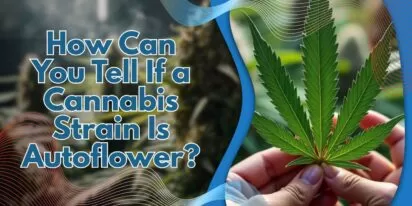
As growers, we want strains that work well, are strong, and are of good quality. Autoflowering cannabis strains are a big step forward for both

Pot growers always ask the same basic question: How much weed does a weed plant produce? The answer is complex and depends on a multitude of var

Ever had the room spin after a few hits? You're not alone. Figuring out how to prevent getting dizzy high can make your cannabis experience a wh
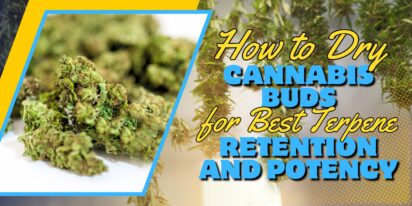
Drying cannabis properly is a critical process in preserving the plant's full aroma and flavor and its psychoactive abilities. Tampering with th

Ever caught yourself a bit too high and all of a sudden in need of being normal? Whether you're heading out for munchies or bumping into someone

Looking for sage advice on how not to get pinched with weed without batting an eye? Attempting to protect your stash from gossipy roommates, sno
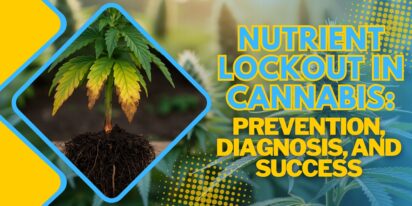
Nutrient lockout, also known as nutrient binding or chemical antagonism, is a significant issue in cannabis cultivation that negatively impacts
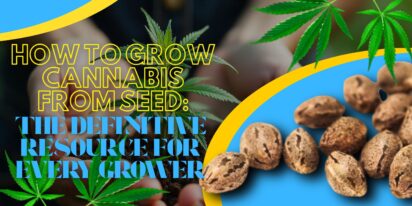
Germination is the most critical initial stage in growing healthy, high-quality cannabis plants. During germination, the dormant seed becomes a
Are You 18 Or Over?
By selecting “Continue”, you confirm that you are at least 18 years of age and legally permitted to access cannabis related content in your region.
By using Rocketseeds.com, you agree to our legal disclaimer.
Excellent blog here Also your website loads up very fast What web host are you using Can I get your affiliate link to your host I wish my web site loaded up as quickly as yours lol
Your writing is not only informative but also incredibly inspiring. You have a knack for sparking curiosity and encouraging critical thinking. Thank you for being such a positive influence!
Simply wish to say your article is as amazing The clearness in your post is just nice and i could assume youre an expert on this subject Well with your permission let me to grab your feed to keep updated with forthcoming post Thanks a million and please carry on the gratifying work
Somebody essentially lend a hand to make significantly articles Id state That is the very first time I frequented your website page and up to now I surprised with the research you made to make this actual submit amazing Wonderful task
Your blog is a beacon of light in the often murky waters of online content. Your thoughtful analysis and insightful commentary never fail to leave a lasting impression. Keep up the amazing work!
Thank you for the auspicious writeup It in fact was a amusement account it Look advanced to more added agreeable from you By the way how could we communicate
Your blog is a constant source of inspiration for me. Your passion for your subject matter shines through in every post, and it’s clear that you genuinely care about making a positive impact on your readers.
Your blog is a constant source of inspiration for me. Your passion for your subject matter is palpable, and it’s clear that you pour your heart and soul into every post. Keep up the incredible work!
Your articles never fail to captivate me. Each one is a testament to your expertise and dedication to your craft. Thank you for sharing your wisdom with the world.
Your blog is a testament to your dedication to your craft. Your commitment to excellence is evident in every aspect of your writing. Thank you for being such a positive influence in the online community.
Your writing has a way of resonating with me on a deep level. I appreciate the honesty and authenticity you bring to every post. Thank you for sharing your journey with us.
Your blog is a true gem in the world of online content. I’m continually impressed by the depth of your research and the clarity of your writing. Thank you for sharing your wisdom with us.
Hi i think that i saw you visited my web site thus i came to Return the favore Im attempting to find things to enhance my siteI suppose its ok to use a few of your ideas
Somebody essentially help to make significantly articles Id state This is the first time I frequented your web page and up to now I surprised with the research you made to make this actual post incredible Fantastic job
Usually I do not read article on blogs however I would like to say that this writeup very compelled me to take a look at and do so Your writing taste has been amazed me Thanks quite nice post
Your blog has quickly become one of my favorites. Your writing is both insightful and thought-provoking, and I always come away from your posts feeling inspired. Keep up the phenomenal work!
Every time I visit your website, I’m greeted with thought-provoking content and impeccable writing. You truly have a gift for articulating complex ideas in a clear and engaging manner.
Hey there You have done a fantastic job I will certainly digg it and personally recommend to my friends Im confident theyll be benefited from this site
I have read some excellent stuff here Definitely value bookmarking for revisiting I wonder how much effort you put to make the sort of excellent informative website
Nice blog here Also your site loads up very fast What host are you using Can I get your affiliate link to your host I wish my site loaded up as quickly as yours lol
What i do not understood is in truth how you are not actually a lot more smartlyliked than you may be now You are very intelligent You realize therefore significantly in the case of this topic produced me individually imagine it from numerous numerous angles Its like men and women dont seem to be fascinated until it is one thing to do with Woman gaga Your own stuffs nice All the time care for it up
Your blog is a beacon of light in the often murky waters of online content. Your thoughtful analysis and insightful commentary never fail to leave a lasting impression. Keep up the amazing work!
Your blog is a breath of fresh air in the often stagnant world of online content. Your thoughtful analysis and insightful commentary never fail to leave a lasting impression. Thank you for sharing your wisdom with us.
Your blog is a beacon of light in the often murky waters of online content. Your thoughtful analysis and insightful commentary never fail to leave a lasting impression. Keep up the amazing work!
Usually I do not read article on blogs however I would like to say that this writeup very compelled me to take a look at and do it Your writing style has been amazed me Thank you very nice article
Your writing has a way of resonating with me on a deep level. I appreciate the honesty and authenticity you bring to every post. Thank you for sharing your journey with us.
This hydroponics guide is quite the buzz, seriously! Who knew growing weed without dirt could be so complicated yet potentially rewarding? The breakdown of systems like DWC and NFT is helpful, though I suspect my cat might confuse the air pump for a toy. The idea of cleaner buds is tempting, especially since explaining hydro weed to my non-growing friends might get messy. And the bit about potential dizziness from hydro weed? Perfect, now I have an excuse for why I always stumble a bit after a grow session. Still, the promise of faster grows and higher yields is hard to ignore, even if it means more trips to the pH meter than to the coffee shop. Overall, a cultivating read for the curious grower!